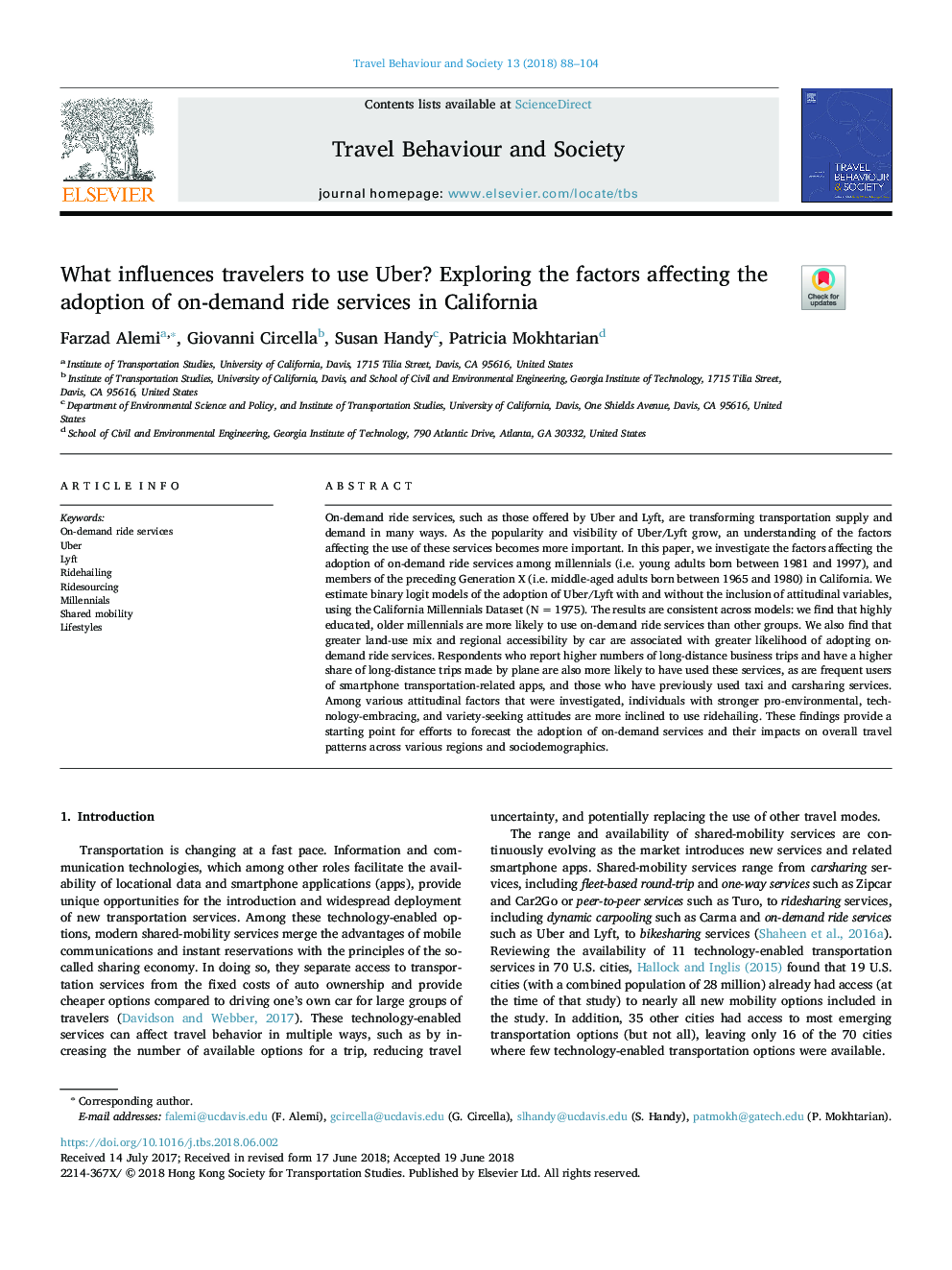| Article ID | Journal | Published Year | Pages | File Type |
|---|---|---|---|---|
| 6576247 | Travel Behaviour and Society | 2018 | 17 Pages |
Abstract
On-demand ride services, such as those offered by Uber and Lyft, are transforming transportation supply and demand in many ways. As the popularity and visibility of Uber/Lyft grow, an understanding of the factors affecting the use of these services becomes more important. In this paper, we investigate the factors affecting the adoption of on-demand ride services among millennials (i.e. young adults born between 1981 and 1997), and members of the preceding Generation X (i.e. middle-aged adults born between 1965 and 1980) in California. We estimate binary logit models of the adoption of Uber/Lyft with and without the inclusion of attitudinal variables, using the California Millennials Dataset (Nâ¯=â¯1975). The results are consistent across models: we find that highly educated, older millennials are more likely to use on-demand ride services than other groups. We also find that greater land-use mix and regional accessibility by car are associated with greater likelihood of adopting on-demand ride services. Respondents who report higher numbers of long-distance business trips and have a higher share of long-distance trips made by plane are also more likely to have used these services, as are frequent users of smartphone transportation-related apps, and those who have previously used taxi and carsharing services. Among various attitudinal factors that were investigated, individuals with stronger pro-environmental, technology-embracing, and variety-seeking attitudes are more inclined to use ridehailing. These findings provide a starting point for efforts to forecast the adoption of on-demand services and their impacts on overall travel patterns across various regions and sociodemographics.
Related Topics
Life Sciences
Environmental Science
Management, Monitoring, Policy and Law
Authors
Farzad Alemi, Giovanni Circella, Susan Handy, Patricia Mokhtarian,
